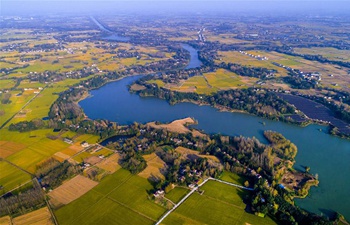HOHHOT, Nov. 1 (Xinhua) -- Ruins found in north China's Inner Mongolia Autonomous Region have been confirmed as dating back at least 50,000 years to the Middle Paleolithic Period, local authorities said Wednesday.
Carbon-14 dating has determined that the ruins, located at Sanlong Mountain in Ar Horqin Banner, are at least 50,000 years old, said Wang Dafang from the regional cultural department.
"This period is close to earliest timeframe that carbon-14 dating can determine, and therefore, the ruins may actually be older than this," Fang said.
The ruins were discovered in 2015 and subsequently excavated and studied by archaeologists with the Chinese Academy of Sciences and Inner Mongolia Museum.
To date, around 500 pieces of stoneware have been unearthed from the two layers dating to Paleolithic Period, which were covered by three layers from later periods measuring one meter thick in total.
The stoneware includes tools with sharp ends or edges believed to have been used for cutting and peeling, Fang said.
These items of stoneware resemble others unearthed from Middle Paleolithic Period ruins discovered in central and western regions of the Eurasian continent.
Very few ruins dating from the Middle Paleolithic Period have been unearthed in north China, and this new discovery will boost research into the living environment, activities and skills of hominids, the ancestors of modern humans, he said.

















